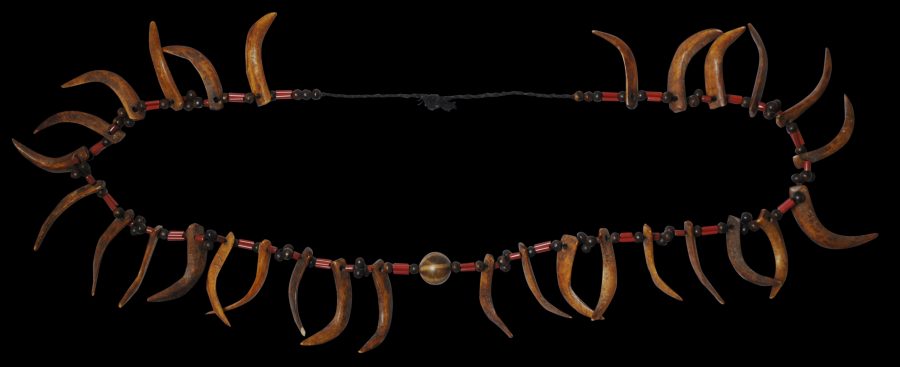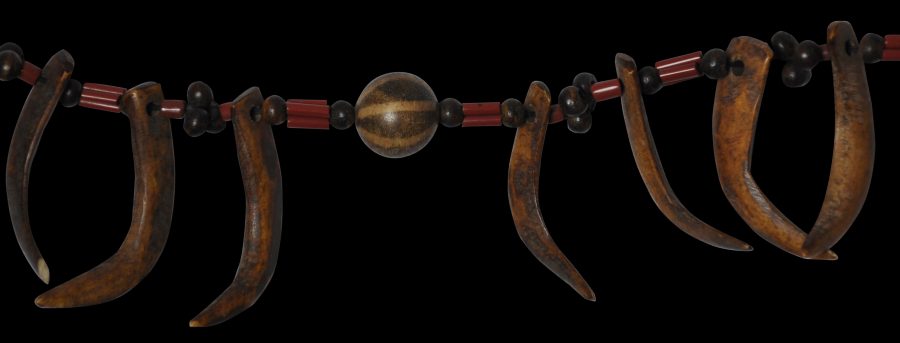Enquiry about object: 4399
Carved Shell, Glass & Wood Bead & Fossilised Palmwood (Pumtek) Necklace
Mizo People, Eastern India, or Naga People, Burma/India circa 1900
length: 80cm, weight: 100g
Provenance
private collection, London.
This necklace comprises a series of what is likely to be slithers of conch shell that have been carved and dyed to look like pangolin claws, class and wood beads and a pumtek bead.
Pangolin claws were used in necklaces in Western Burma and Eastern India. The use of shell to emulate such claws is consistent with the variable use of imported shells in the region: shells were traded and their wear was considered a show of power, wealth and fertility.
This necklace includes a central, single spherical bead of etched opalised or fossilised palmwood (fossilised palmwood is known as pumtek,‘buried thunderbolts’).
This type of bead is one of the more remarkable beads in South and Southeast Asia given their scarcity and the longevity of their heirloom tradition. They come from the fossilised or opalised wood of a certain type of palm (borasus flabellifer) and are decorated with white geometric designs against a purposefully darkened base in a way that seems informed by the Dzi beads that became popular in Tibet.
The beads were made in Waddi, a walled town of the Pyu, the Indianised founders of the first state in what became Burma (Myanmar) which lasted from the fifth to the thirteenth century AD. The main buyers at the time of the beads appear to have been the Chin people, who still live today in Western Burma. The Chin used pumtek beads in marriage ceremonies and were an important part of complex Chin inheritance systems.
Latterly, the Mizo people of Indian’s Mizoram state (formerly a part of Assam state) also took to wearing pumtek beads which are believed to have originated with the Pyu kingdom.
The necklace is in fine condition. One of the ‘claw’ has lost its tip, but otherwise, the condition is fine. It is threaded on a native twine.

A Chin woman from Western Burma wearing apumtek bead necklace, circa 1880.
References
Daalder, T., Ethnic Jewellery and Adornment: Australia, Oceania, Asia, Africa, Ethnic Art Press/Macmillan, 2009.
Francis, P., Asia’s Maritime Bead Trade: 300 BC to the Present, University of Hawai’i Press, 2002.
Richter, A., The Jewelry of Southeast Asia, Thames & Hudson, 2000.
Shilu, A., Naga Tribal Adornment: Signatures of Status and Self, The Bead Museum, Washington, 2003.



